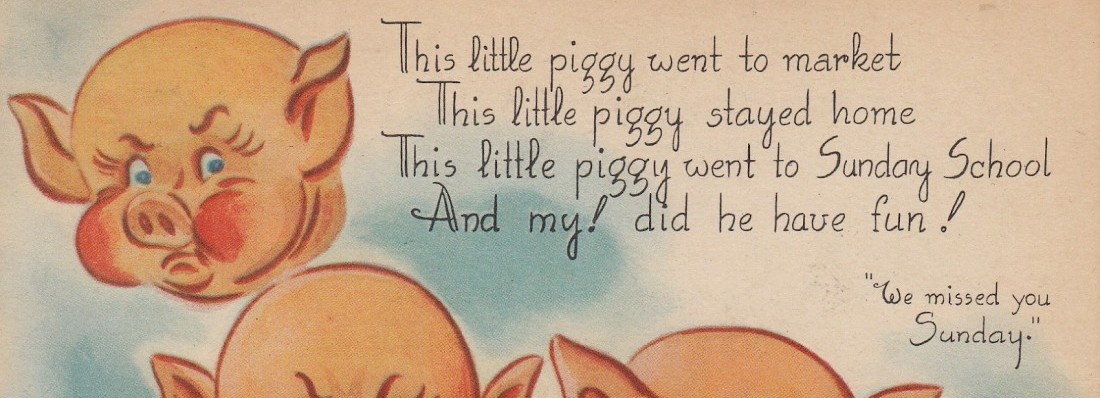
When I was a child of seven or eight years old, my Sunday School teacher was Mrs. Scofield. Each week the other children and I sat in pint-sized wooden chairs in rows and listened to her tell stories using a flannel-graph board. I don’t remember what we learned but, like much of childhood, I have visual impressions punctuated with occasional clear memories.
When I was a young teenager at a different church, the Sunday School had an attendance awards system that they took very seriously. Try a Google Images search for “Sunday School Attendance pins” and you will see what I mean.
I’ve been thinking a lot about our children’s ministry here at St. Matthew’s, which has made me reflect on how Sunday School compares to my experience of it as a child. In some ways it is not all that different — there are small wooden chairs and craft supplies. My daughter and the other preschoolers love singing the classic songs like “Zacchaeus” and “Kumbaya.”
Those of you readers who do not have children in our Sunday School may wonder what goes on downstairs each Sunday morning. As I have spent just as many Sundays downstairs as I have in grown-up church over the past few years, I can offer my perspective as a parent and a teacher.
To borrow a phrase from the CBC’s Stuart MacLean: “We may not be big, but we’re small.” All the children at St. Matthew’s divide themselves into two groups. It’s really quite a straightforward division:
1) Those who are too little to stay by themselves in the class. We have no formal nursery so parents of babies stay with them. It’s actually quite a peaceful environment and, as another mom commented to me a few years ago when our babies were little, sometimes church happens in our conversation with each other.
2) All those old enough to sit in the class (age two or three) up to those who feel too old for the class (around 13 years old). The wide age range is the biggest challenge for the teachers. What is harder than trying to teach a group of three year olds about the Trinity? Surely it is teaching three year olds, seven year olds and eleven year olds at the same time.
Several teams of teachers rotate teaching duties. We forego organized curriculum and instead follow the Church calendar along with the rest of the congregation. Each teacher brings his/her own style. The art teacher among us often has the children fashion age-appropriate and fridge-worthy pieces. The homeschooling parents often have the children sitting on a blanket on the grass, singing songs with a guitar. I’ve seen some of our highly creative people come up with conceptual games to teach parables and theological concepts. We build a lesson around the week’s readings but other than that, the only constant is snack time.
Certainly our Sunday School is as culturally-specific as the original Sunday Schools were to England’s Industrial Revolution and my childhood Sunday Schools were to Canada in the 1980s. Our teachers have had police background checks and you won’t find gluten, nuts, or artificial food colouring in our snacks. There is no special award for coming every week and there is no dress code. Thankfully, we don’t tell stories about missionaries with racist undertones (as I remember from my childhood).
It makes me wonder what our children will remember. They will probably retain memories of the teachers and their kindness, the songs we sing, and the Bible stories — by that I mean the characters and basic plot. Anything else is gravy.
In closing, I offer you two topics of conversation I think we should be having at St. Matthews:
1) How to include our children in the main service. One thing I appreciate about the liturgical Anglican service is how music is woven into the liturgy — it seems more participatory than performative. Certainly, there is no “Christian karaoke,” as an astute Baptist once dubbed the practice of “special music” in his own church tradition. We need to include our children in the services but maybe we can think about how to do it in a way that does not just show off their cuteness and precocious singing. There was a lovely moment at our family Christmas service last year when all the children were up on the stage looking at baby Grace in the manger and singing Christmas carols together. In my mind, that’s the goal.
2) What to do with our children as they naturally outgrow Sunday School. The parents of older children have probably thought about this but perhaps the rest of us should as well.
